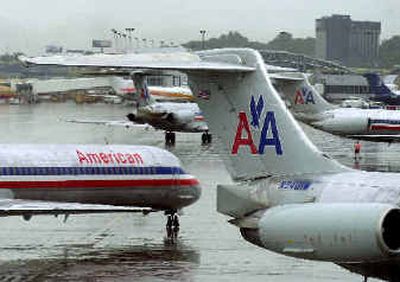Airlines enjoy another safe year

WASHINGTON — Only 34 people have died in U.S. commercial airline crashes in the past three years, making it one of the safest periods in aviation history even as more Americans than ever travel by air.
On Oct. 20, a Corporate Airlines twin-engine turboprop crashed into the woods on approach to the Kirksville Regional Airport in Missouri, killing 13 people. Those were the only fatalities aboard U.S. scheduled airlines for the year.
National Transportation Safety Board chairman Ellen Engleman Conners, noting that some 42,000 people die every year on the roads, said, “I hope all modes of transportation could replicate aviation’s safety record.”
The last U.S. crash of a jumbo jet was Nov. 12, 2001, when American Airlines Flight 587 lost part of its tail and plummeted into a New York City neighborhood, killing 265 people. Safety investigators concluded that the crash was caused by the pilot moving the rudder back and forth too aggressively, which put more pressure on the tail than it could bear.
Last year, the number of fatal accidents per 100,000 departures was .015. Air travelers are estimated to have boarded planes 685 million times in 2004, a 3 percent increase over 2000, the previous busiest year, according to the Air Transport Association.
Marion Blakey, who heads the Federal Aviation Administration, said new technology has improved safety. For example, many planes now have systems that warn pilots if they’re about to fly too close to the ground.
Jets and turboprops manufactured after March 29, 2003, are required by federal regulations to have a so-called Terrain Awareness and Warning System. All other planes with more than six seats must be retrofitted with the devices by March 29, 2005.
The plane that crashed in Missouri in October was months away from being outfitted with a terrain-warning system that might have prevented the accident.
On the ground, 34 major airports have been equipped with systems that warn air traffic controllers of a potential collision on runways. One of the worst aviation disasters in history involved two jumbo jets that ran into each other on a runway in Tenerife in the Canary Islands in 1977, killing 582 people.
Weather radar and wind shear alert systems also have helped eliminate accidents caused when planes encounter concentrated downward bursts of wind on approach to the airport.
Safety experts agree that better training and awareness of safety issues have played a big part in making U.S. skies safer.
A key effort has been the FAA’s formation in 1997 of the Commercial Aviation Safety Team, which set the goal of reducing fatal aviation accident rates by 80 percent by 2007. The accident rate has fallen 50 percent since, and is on track to meet the goal, said FAA spokeswoman Alison Duquette.